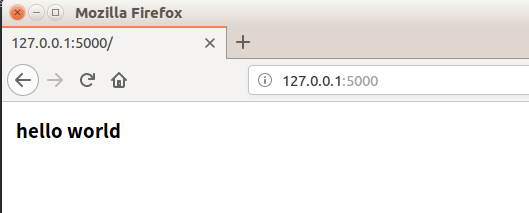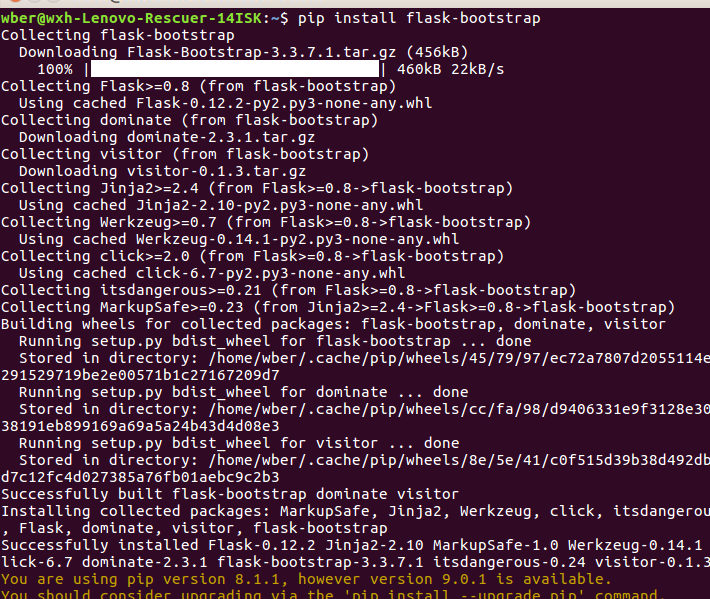模板是一個包含響應文本的文件,其中包含佔位變量表示的動態部分,其具體值只是請求上下文中才能知道。使用真實值替換變量,再返回最終得到的響應字符串,這一過程稱爲渲染。爲了渲染模板,Flask使用了一個名爲Jinja2的強大面板引擎。
Jinja2模板引擎
形式簡單的Jinja2模板就是一個包含響應文本的文件。
Flask程序源碼:
1 from flask import Flask,render_template 2 3 app = Flask(__name__) 4 5 @app.route('/') 6 def index(): 7 return render_template('index.html') 8 9 @app.route('/user/<name>') 10 def user(name): 11 return render_template('user.html',name=name) 12 13 if __name__=='__main__': 14 app.run()
index.html內容:
1 <h6>hello world</h6>
user.html內容:
1 <h6>hello,{{name}}!</h6>
運行結果:


結果與之前Flask從入門到入土(二)中結果相同。
使用Flask-Bootstrap集成Twitter Bootstrap
Bootstrap是一個Twitter的開源框架,它提供的用戶界面組件可以用於創建整潔且具有吸引力的網頁,而且這些網頁還能兼容所有現代Web瀏覽器。
Bootstrap是客戶端框架,因此不會直接涉及服務器。服務器需要做的只是提供引用了Bootstrap層疊樣式表和Javascript文件的html響應,並在html,css和Javascript代碼中實例化所需組件。這些操作最理想的執行場所就是模板。
想要在程序中集成Bootstrap,顯然要對模板做所有必要的改動。不過,更簡單的方法是使用一個名爲Flask-Bootstrap的Flask擴展,簡化集成的過程。Flask-Bootstrap使用pip安裝:
1 pip install flask-bootstrap

Flask擴展一般都是在創建實例時初始化。
from flask.ext.bootstrap import Bootstrap:专为 Flask 开发的扩展都暴露在 flask.ext 命名空间下,Flask-Bootstrap 输出了一个 Bootstrap 类。
bootstrap = Bootstrap(app):Flask 扩展一般都在创建程序实例时初始化,这行代码是 Flask-Bootstrap 的初始化方法。
1 from flask import Flask,render_template 2 from flask.ext.bootstrap import Bootstrap 3 4 app = Flask(__name__) 5 bootstrap = Bootstrap(app) 6 7 @app.route('/') 8 def index(): 9 return render_template('index.html') 10 11 if __name__ == "__main__": 12 app.run(debug = True)